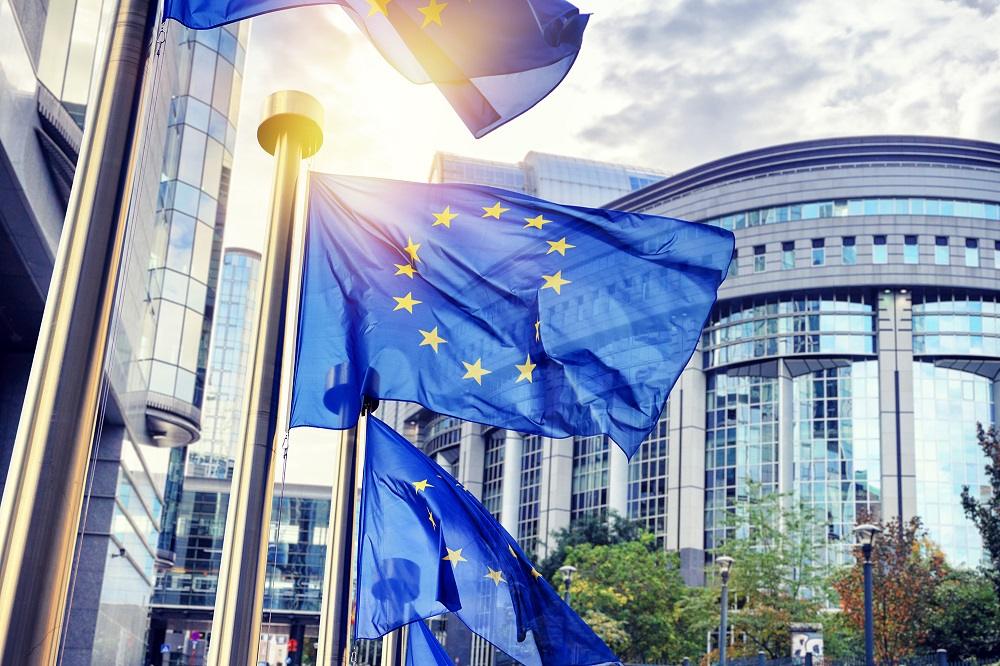Guest Post: What Business Leaders Need To Know About the Growing Pains in Europe’s ESG Governance
BY: Peter Walsh, Benchmark Digital Partners
Whether you look at sustainable fund flows or the number of companies making Environmental, Social and Governance (ESG) disclosures, it’s clear that Europe’s financial and non-financial corporations lead the world in sustainable finance and responsible business.
Public policy is both the key enabler and driver of this outsized commitment to climate-alignment and environmental stewardship shown by Europe’s investors and business leaders. Specifically, policymakers of the EU and its member states—both past and present—have led their global counterparts in efforts to bring transparency and credibility to corporate sustainability practices.
Given Europe’s multi-level governance, charting an effective course of adaptation may seem a daunting task. Yet there are both short and long-term solutions. In the near-term, companies can adapt by adopting a rigorous “double materiality” standard and operationalizing systems capable of producing verifiable “investment-grade” ESG performance data. Together, these can accommodate the rules and expectations of European governments and investors. Long-term, companies should prepare to implement corporate due diligence policies that complement the EU’s overarching sustainable development goals, particularly its commitment to climate neutrality by 2050, and be able to provide timely and verifiable evidence of those policies’ outcomes—across their value chains.
While this may seem like a major task, it’s worth remembering that this is what the corporate world wants. With an estimated 42% of European companies exaggerating or misrepresenting their performance against climate and environmental matters, it’s not unreasonable that more than two-thirds of European investors are concerned about “greenwashing” among issuers, nor is it surprising that 49% of European investors see regulatory intervention as the best remedy.
Yet compliance with Europe’s current ESG disclosure rules for both financial and non-financial corporations is proving both burdensome and, in some cases, disruptive. And there is uncertainty regarding the timeline and scope of the region’s forthcoming ESG disclosure rules for both companies and investors. And there is uncertainty over whether EU disclosure rules will deviate from the converging disclosure frameworks of major voluntary reporting standards organizations. With these obstacles and uncertainties in mind, there are three major themes to look for in ESG governance in Europe in the coming years.
First, in the near-term, European governments will increasingly apply the double materiality standard in their corporate sustainability reporting rules. This is immediately apparent in the recently enforced EU Taxonomy Regulation, the bloc’s classification system for environmentally sustainable economic activities, whose double materiality disclosure requirements apply to firms covered by the Non-Financial Reporting Directive (NFRD).
Designed, in part, to serve as a sustainable investment screening tool for private and public investors, attracting funds channeled through the EU’s green taxonomy requires companies to demonstrate how their activities achieve one of six environmental objectives, namely climate change mitigation and adaptation, while doing “no significant harm” to any of the others. The same is true for firms that want to finance future activities with capital channeled through the taxonomy; meeting the criteria of the European Commission’s (EC) proposed, potentially mandatory EU Green Bond Standard will require business leaders to provide investment-grade data demonstrating how their intended projects align with the taxonomy’s rules.
The Corporate Sustainability Reporting Directive (CSRD), the EC’s proposed successor to the NFRD poised to take effect in 2023, is not only expected to expand the number of companies required to make sustainability disclosures from roughly 12,000 to nearly 50,000, but codify the double materiality standard—a move supported by the European Financial Reporting Advisory Group (EFRAG) and other stakeholder groups. Further, the CSRD would strengthen the data quality requirements for reporting entities. These include mandatory digitization of ESG performance data in machine-readable formats so that it is more suitable for stakeholder consumption as well as mandatory third-party audits, which are intended, in part, to allay concerns over greenwashing.
The near-term advantages of operationalizing a company ESG program rooted in a holistic double materiality standard, though, are not limited to compliance with the EU taxonomy, the NFRD or proposed CSRD.
The materiality definition enshrined in each of these policies aligns with that of the Global Reporting Initiative (GRI), the voluntary ESG disclosure framework most widely accepted by global investors and strongly reflected in the existing disclosure rules of the region’s national governments. Further, European policymakers are ramping up efforts to incorporate the double materiality standard for the ESG disclosure rules covering financial corporations; obligations intended to eliminate greenwashing of financial products and services that investors will surely pass along to their portfolio companies.
And while there are emerging concerns over divergence between Britain’s and the EU’s ESG governance, business leaders can at least trust that the green taxonomy under development in the UK will enshrine the same “do no harm” criterion as its continental analog, and that its corresponding Sustainability Disclosure Requirements (SDR) will apply the same double materiality standard as the EC.
This speaks to the second theme in Europe’s corporate sustainability policymaking that will shape the region’s near-term ESG governance. The region’s governments intend for their corporate sustainability disclosure rules to help fulfill their national climate goals. As seen in the EU and UK, as well as France, Germany, Portugal, Switzerland and elsewhere, European policymakers use their ESG disclosure rules as a mechanism for driving capital towards companies and assets that advance progress towards national emissions reduction, climate change adaptation and conservation commitments.
The region’s governments want, albeit to varying degrees, for their companies (and investors) to produce hard evidence that show not only how they’re mitigating inward climate and environmental risks, but minimizing their organizations’ adverse impacts on the climate and environment. Companies that want to be seen as responsible citizens, then, will need to apply their double materiality standard to climate and environmental issues and provide the evidence substantiating their performance against them.
Third, business leaders must appreciate that, over the long term, European policymakers, both at the EU-level and below, will continue to ramp up oversight of corporate due diligence. Specifically, they are turning their attention to the social and especially environmental impacts of companies’ supply chains.
Indeed, after much delay, the EC recently released its proposal for a mandatory, pan-European human rights and environmental due diligence rule. As proposed, the Sustainable Corporate Governance Directive (Directive) will, if adopted by the European Parliament and Council, require certain companies to identify adverse environmental and human rights impacts of their value chains, establish protocols for mitigating those impacts and regularly report the effects of their mitigation efforts in line with the CSRD.
Admittedly, the coverage of the proposed directive is less ambitious than some might have hoped. The rule only applies to especially large companies, as well as SMEs in so-called “high-impact” sectors. Even still, business leaders of all sorts can expect for the companies that are explicitly obliged to comply with the Directive’s disclosure obligations will transfer some if not all of that burden to their supplier networks, thereby intensifying the need to produce high-quality ESG performance data of their own.
Moreover, business leaders must remember that the Directive is only a proposal which, like the CSRD, makes it subject to amendment before it’s adopted—a process that may take several years. In the event amendments are made, companies can expect they will be to widen the scope of the Directive’s application. The EC’s earlier consultation on the Directive found widespread support for an ambitious, pan-European legal framework for corporate due diligence; and since the proposal’s publication, investor and advocacy groups are calling for it’s scope to be expanded.
In the meantime, the EC’s preliminary rulebook for the Directive may offer some clarity. Though, understanding the EC’s intent with the Directive—to mitigate fragmentation of corporate due diligence requirements in the single market—perhaps more instructive are the corporate due diligence laws already adopted or proposed by the governments of Belgium, Germany, Norway, the Netherlands, Spain and the UK. France’s Duty of Vigilance Law, at least in the near-term, stands to be the most formative. Not only does France’s rule predate and outmatch Europe’s others, its influence is sure to be projected by French President Emmanual Macron who, as the current president of the Council of the European Union, the bloc’s policy agenda-setting body, has already been credited with securing the Council’s recent adoption of the proposed CSRD.
Whatever shape Europe’s ESG governance landscape takes, it’s clear that companies engaged in the region will need to premise their ESG programs upon a climate- and environment-focused double materiality standard. Europe’s governments are proving determined to lead on national climate commitments, and therefore are showing they want their companies to do more than simply develop a better understanding of their ESG risks and report them to their stakeholders. They want their companies to show their stakeholders—including government watchdogs—how they’re minimizing their adverse climate, environmental and other ESG impacts.
Responding to these demands will, of course, require significant development of human and technological resources. But this focus on double materiality and impact management is, ultimately, a more honest, holistic appraisal of the private sector’s role in building a more sustainable economy. And the business leaders who invest in their ESG performance measurement and reporting capabilities needed to step into that role can not only expect to be rewarded for their efforts, but be able to say that they’re doing well by doing good” with real credibility.
About the author:
Based in France, Peter Walsh is the Europe Business Development Director for Benchmark Digital Partners, a leading provider of cloud-based Environmental, Social and Governance (ESG) data management and reporting solutions with a rapidly growing global presence.





